The Luxury Travel Boom: How India's Elite are Redefining Spending Patterns
August 7, 2024
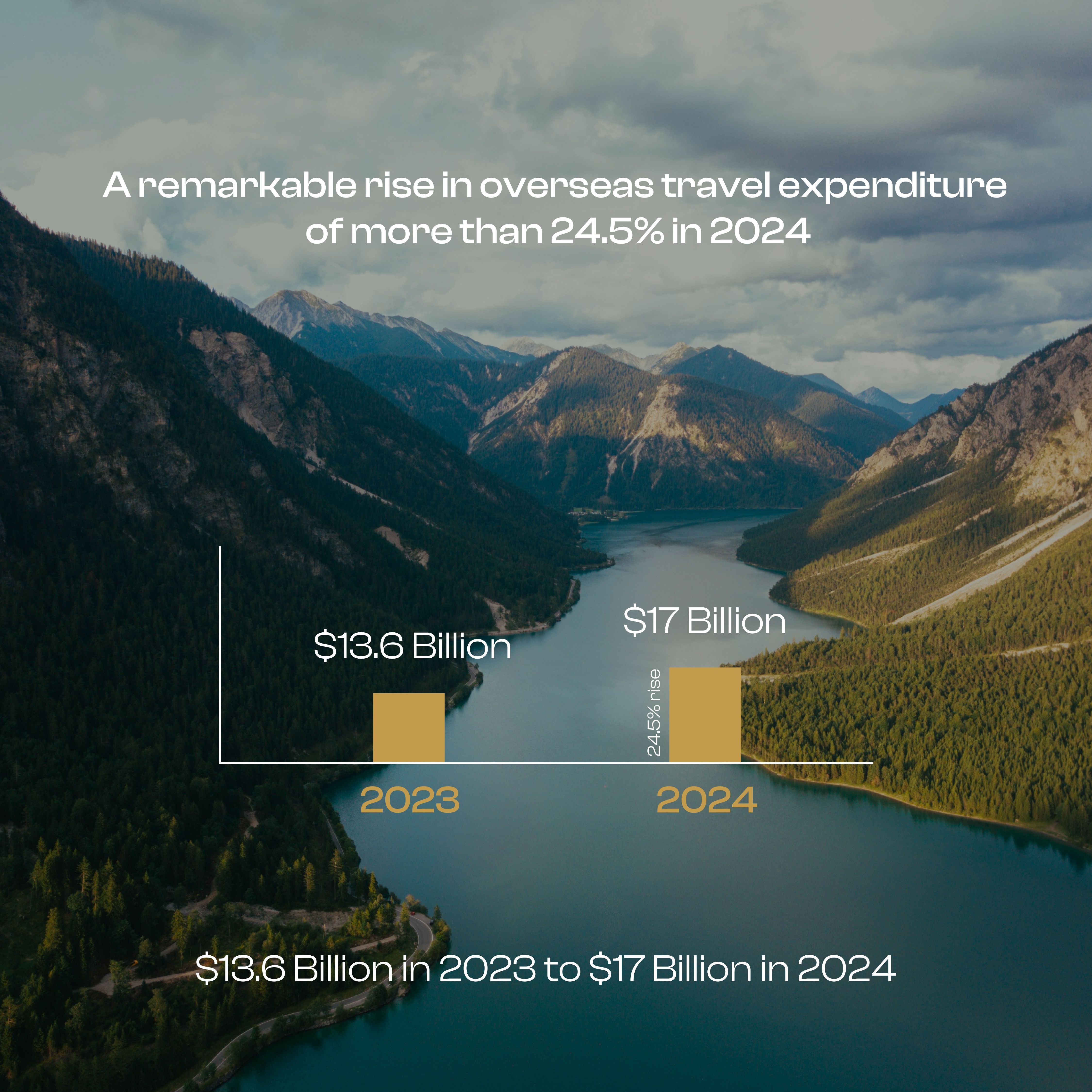
In recent years, India has witnessed an unprecedented luxury travel boom, particularly among its affluent demographic. The statistics for fiscal year 2024 reveal a staggering increase in overseas travel spending, underscoring a significant shift in luxury travel patterns and expenditure habits among Indian travellers.
The annual data highlights overseas travel expenditure soaring to $17 billion in FY24—a substantial increase of more than 24.5% compared to $13.6 billion in the previous fiscal year. This surge indicates a growing propensity among Indians to explore international destinations, driven by rising disposable incomes and an expanding middle class.
According to the Reserve Bank of India (RBI), outward foreign exchange remittances averaged $1.42 billion per month in 2023-24, a stark rise from $400 million in 2018-19. This uptick reflects the increasing number of Indians venturing abroad for leisure, business, and luxury experiences.
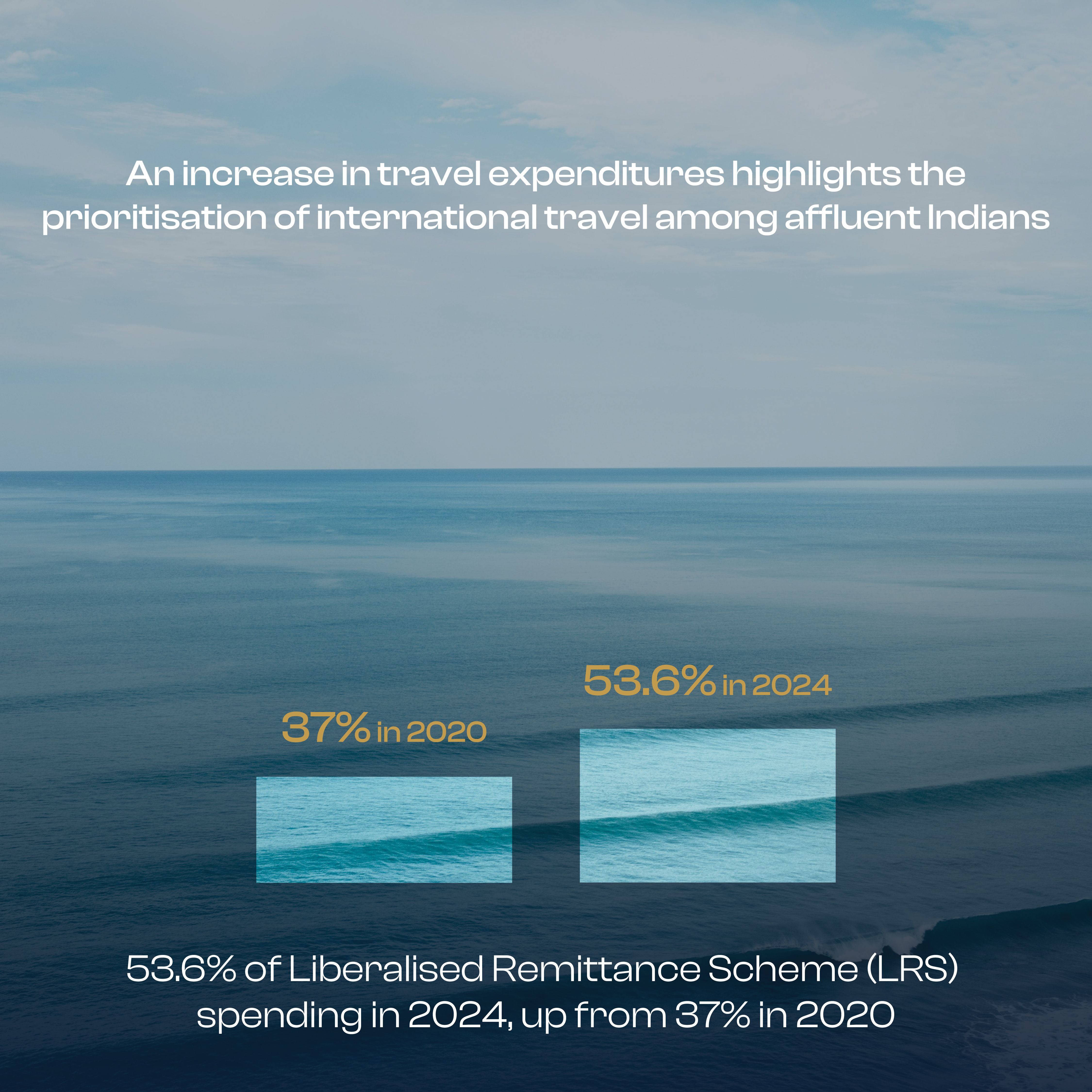
How Elites Spend on Travel?
Luxury Travel Dynamics in India
Travel expenditures now constitute 53.6% of Liberalised Remittance Scheme (LRS) spending, up from 37% in FY20, highlighting the prioritisation of international travel among affluent Indians.
A recent survey indicates that 89% of Indian High Net Worth (HNW) individuals plan to spend more on travel in the next 12 months. Among these travellers, 74% prefer to travel within the Asia-Pacific region, while culinary experiences or discovering new foods are a top priority for 88% of travellers. Celebrations account for 25% of planned holidays, with 38% planning trips with friends and 33% making theirs a celebratory trip. This trend underscores the evolving preferences and increasing spending power of India's affluent travellers.
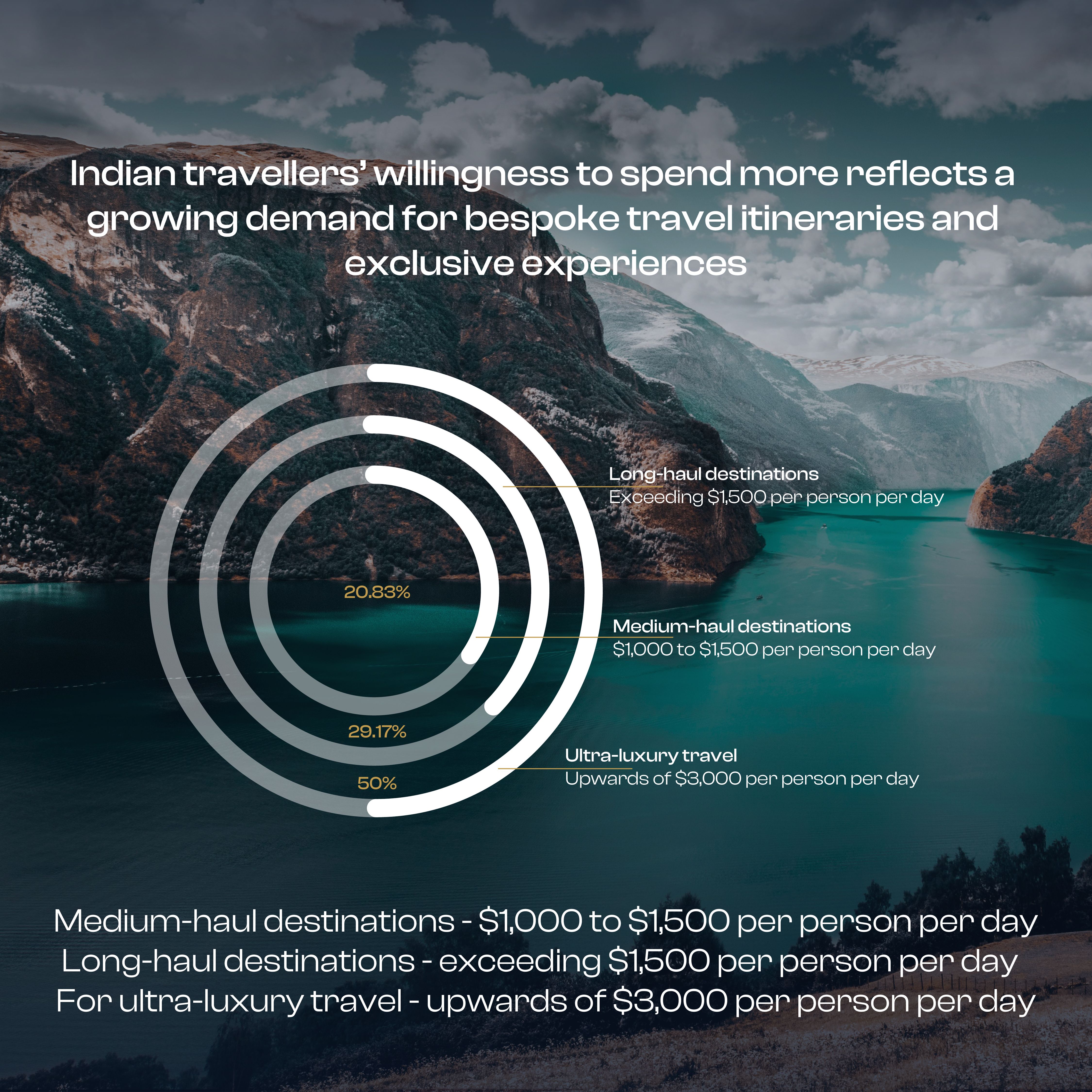
Destination Preferences and Expenditure
Indian travellers are increasingly drawn to destinations offering luxury experiences, relaxation, and cultural exploration. Medium-haul destinations like Europe and Australia attract travellers willing to spend between $1,000 to $1,500 per person per day on luxury accommodation, fine dining, and exclusive tours. Long-haul destinations such as the United States and Canada see expenditures exceeding $1,500 per day, catering to those seeking premium travel experiences.
For ultra-luxury travel, including private yacht charters, African safaris, and luxury train journeys, Indian travellers may spend upwards of $3,000 per person per day, reflecting a growing demand for bespoke travel itineraries and exclusive experiences.
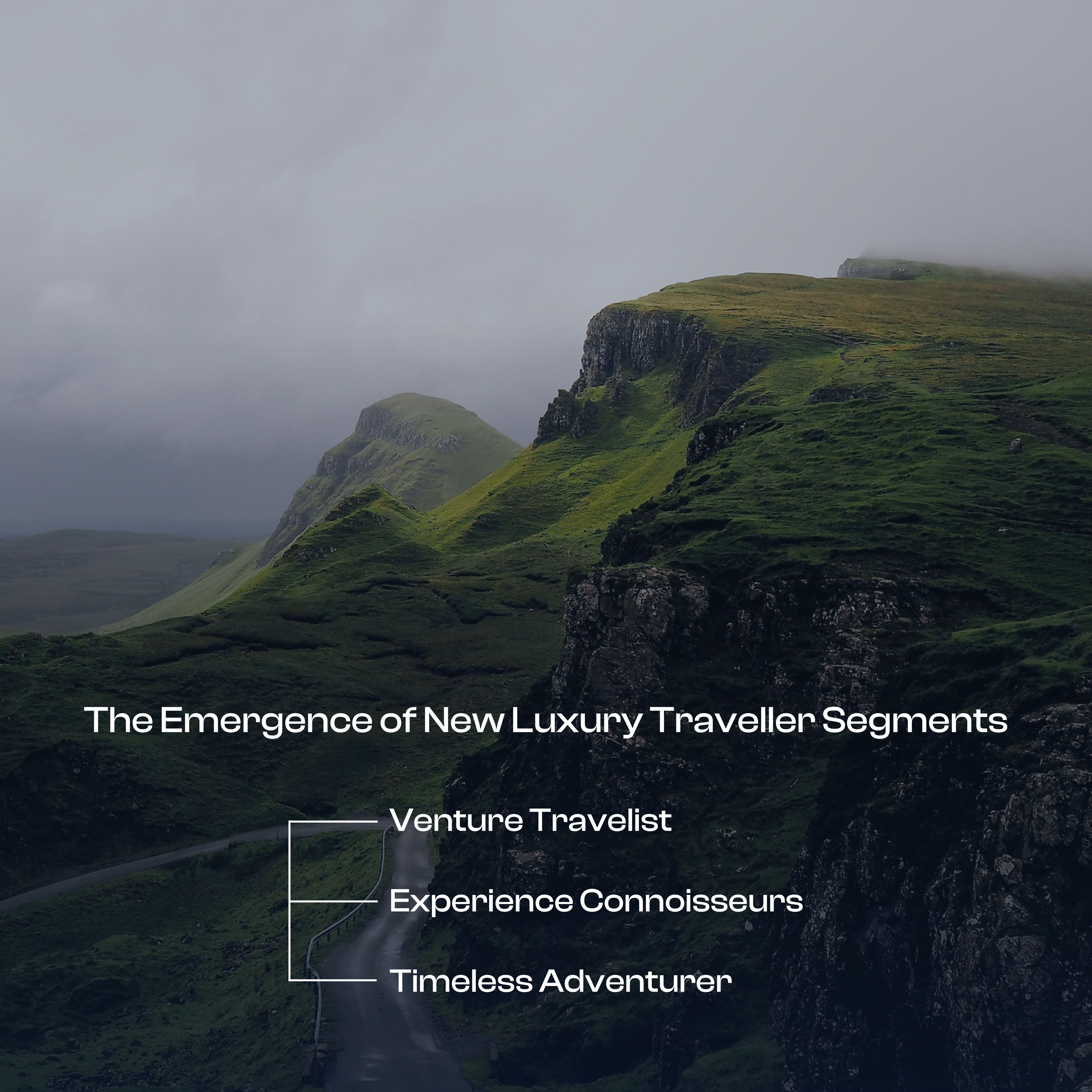
Redefining Luxury Travel Patterns in India
The Emergence of New Luxury Traveller Segments:
Venture Travelist: On the other end of the spectrum are the Venture Travelists, who view travel as an opportunity for business expansion and networking. These corporate travellers combine high-end leisure experiences with strategic business meetings, often choosing exotic locations that offer both luxury amenities and conducive environments for professional engagements.
Experience Connoisseurs: Millennials who travel to enrich their lives through immersive cultural experiences, transformative encounters with nature, and participation in local traditions are Experience Connoisseurs. They prioritise personal growth, sustainability, and ethical tourism, seeking journeys that deepen their understanding of global diversity and foster meaningful connections with communities worldwide.
Timeless Adventurer: This group comprises travellers aged over 65 who eschew traditional tour packages in favour of crafting bespoke itineraries. These seasoned explorers seek out destinations before they gain mainstream popularity, valuing authenticity and cultural immersion in their travels.
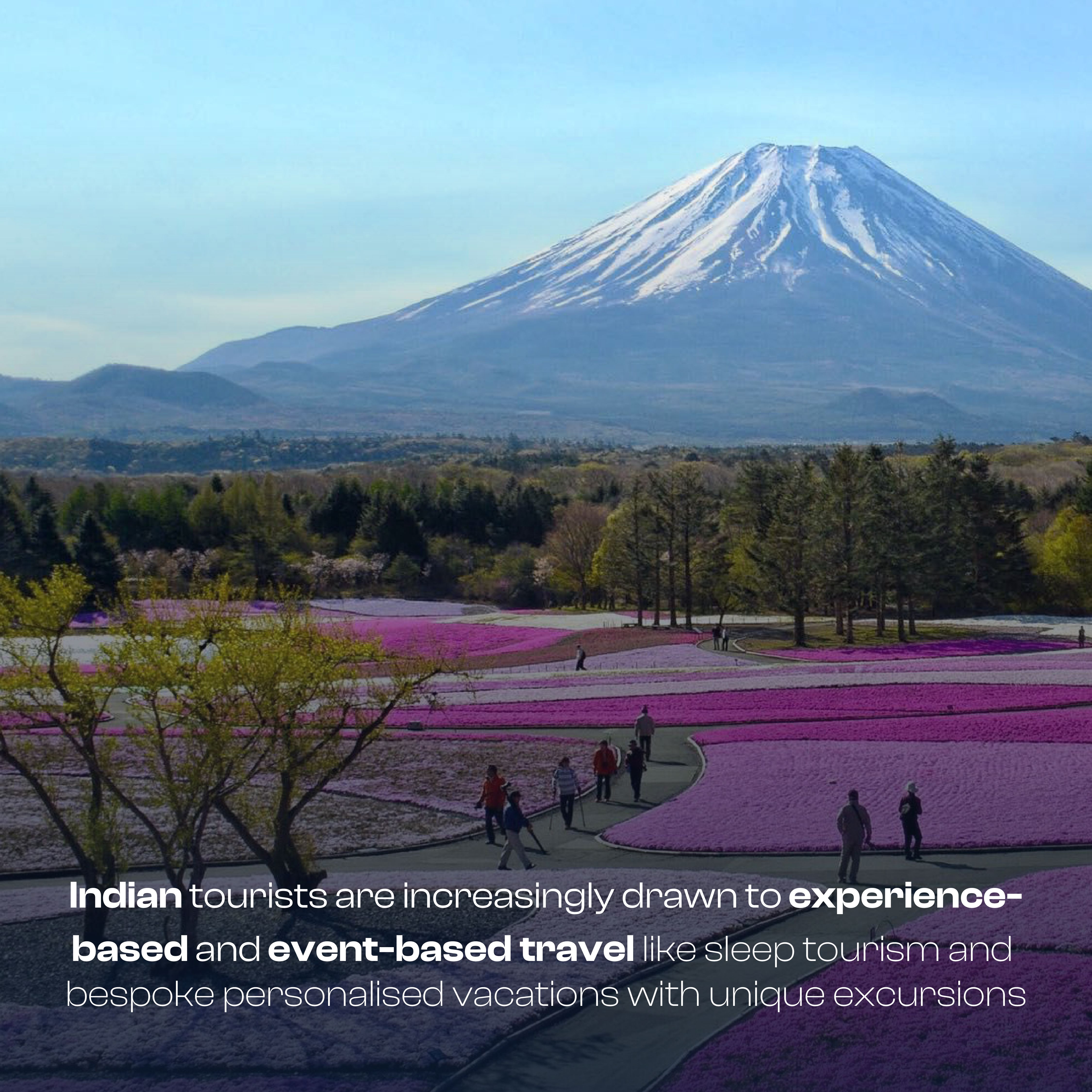
Rise in Experience-Based and Event-Based Travel
Indian tourists are increasingly drawn to experience-based and event-based travel. Millennials, Gen Z, and young professionals seek travel experiences aligned with their hobbies and passions. The rise of "sleep tourism," encompassing spa treatments, yoga, and swimming, complements this trend. There is also a growing demand for bespoke private vacations catering to discerning travellers seeking unique experiences.
Customised Travel Itineraries and High-End Experiences
Affluent travellers eagerly invest in personalised travel itineraries crafted to suit their unique interests and preferences. They prioritise experiences such as adventure sports like private yacht trips and scuba diving, alongside culinary delights such as private beachfront dinners and gourmet meals. This has led to the rise of luxury travel companies specialising in personalised travel experiences, such as private jet charters and luxury yacht rentals. Travellers are looking for authentic local meals made by renowned chefs using local flavours and ingredients, in addition to high-end international dining.
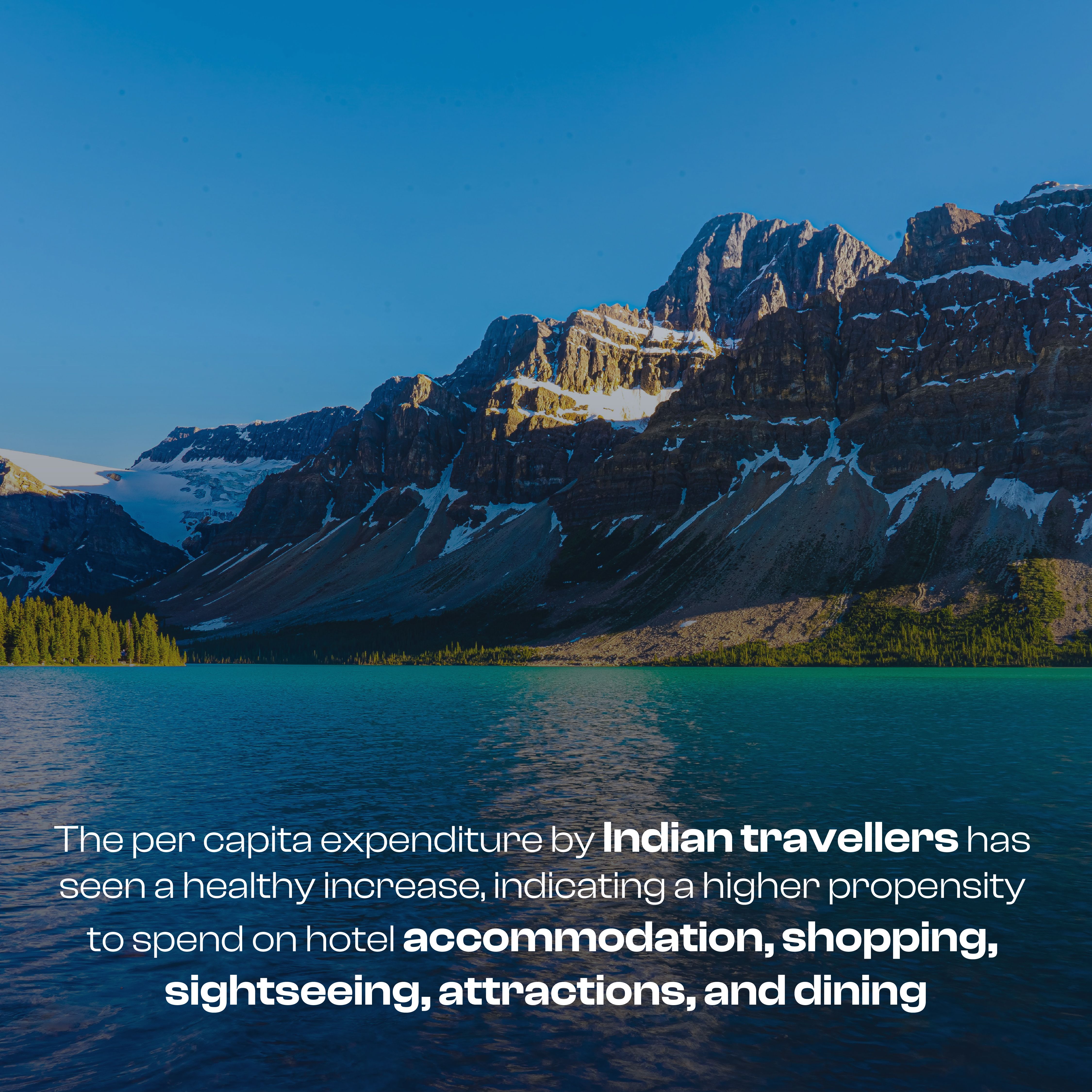
Key Destinations for Indian Travellers
For long-haul adventures, destinations like Australia, New Zealand, France, Switzerland, Spain, Portugal, Hungary, and Finland are anticipated to be popular choices. Shorter getaways tend to favour vibrant destinations like Singapore, Malaysia, Maldives, Dubai, Abu Dhabi, Thailand, Indonesia, Saudi Arabia, Ras Al Khaimah, Oman, Hong Kong, Vietnam, and Bhutan.
What are the Spending Habits of Indian Travellers?
Per Capita Expenditure and Luxury Travel Costs
The per capita expenditure by Indian travellers has seen a healthy increase, indicating a higher propensity to spend on hotel accommodation, shopping, sightseeing, attractions, and dining. For luxury vacations to destinations within Asia, such as Dubai, Singapore, Thailand, and Bali, Indian travellers might spend anywhere from USD 400–800 or more per person per day.
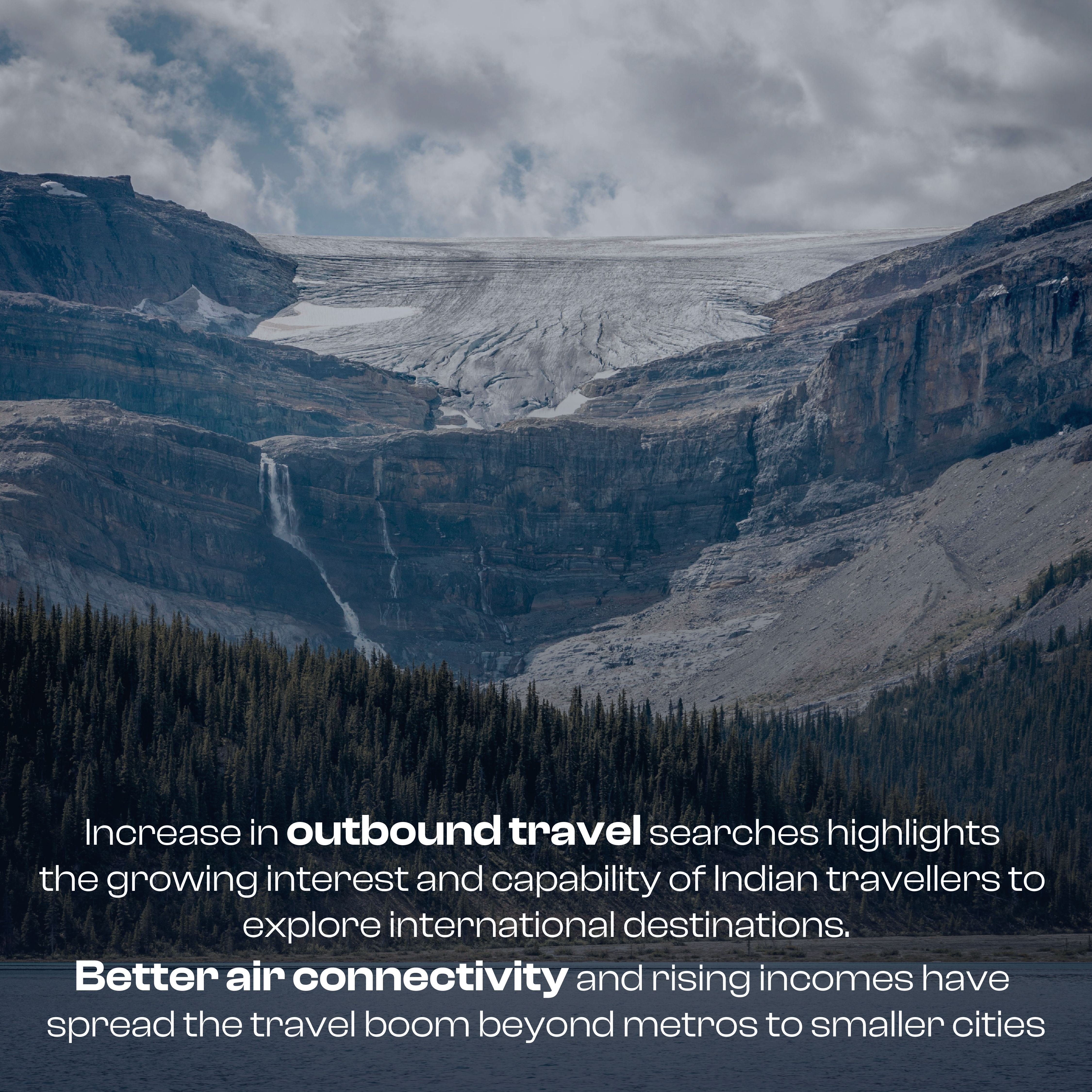
How are International Destinations Responding to Indian Travellers?
The continuous growth in India’s luxury travel market has attracted numerous destinations, from Saudi Arabia and San Francisco to Switzerland and Singapore, all focusing extensively on the Indian market. Today, nearly every destination and hotel worldwide is targeting the Indian market, particularly the high-end segment. This reflects the growing influence and purchasing power of Indian travellers in the global luxury travel industry. In terms of how elites spend on travel, India is signalling the country’s high propensity for travel-related expenditures.
Impact of Air Connectivity and Economic Growth
Better air connectivity and growing incomes have spread the travel boom beyond metros to smaller cities in India. According to a survey conducted by Agoda, Indian travellers exhibit the fastest growth in searches for international trips compared to any other global market. Outbound travel searches from India jumped by 225%, highlighting the growing interest and capability of Indian travellers to explore international destinations.
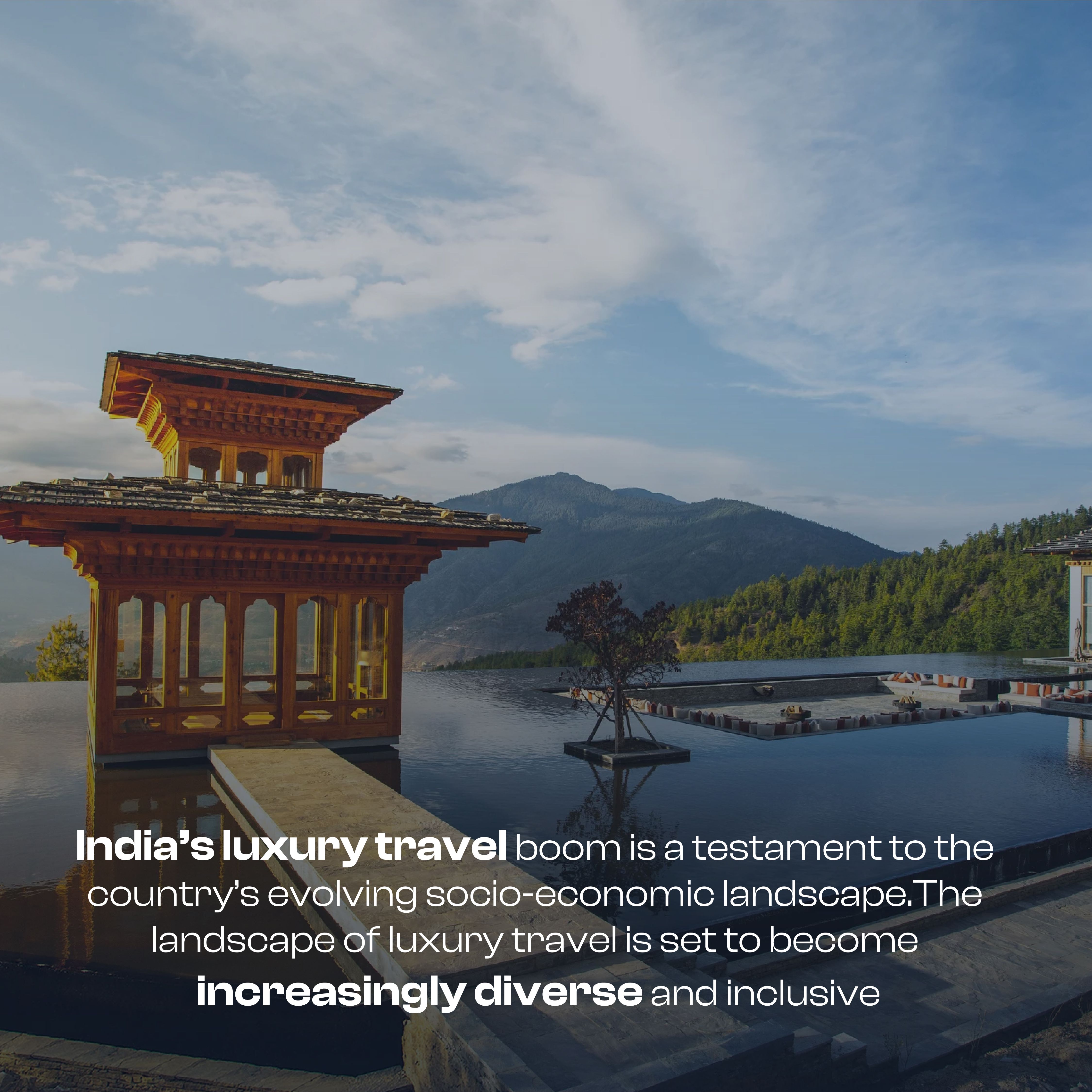
India’s luxury travel boom is more than just a statistical phenomenon; it is a testament to the country’s evolving socio-economic landscape. It reflects a dynamic shift in consumer behaviour and how elites spend on travel. With a robust growth trajectory projected for the coming years, the luxury travel market is poised to further evolve, offering new opportunities for both travellers and destinations alike. As Indian travellers continue to expand their luxury travel patterns and seek unique luxury experiences globally, the landscape of luxury travel is set to become increasingly diverse and inclusive. This new era of exploration heralds unprecedented growth and opportunities, shaping the future of global travel.
Sources: EconomicTimes, HindustanTimes, IndiaOutbound